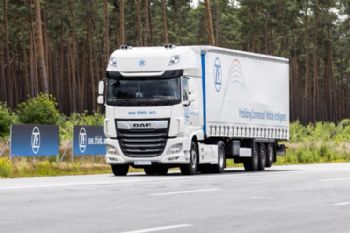
The German company
ZF says that by integrating the company’s ‘intelligent software solutions with its chassis technologies’, vehicle performance and safety can be improved, ensuring safer and smoother journeys.
“As automotive technologies shift towards greater digital integration, ZF is not only setting the pace as an enabler of smart and connected technologies but also leveraging its software expertise from other vehicle segments within the ZF Group to produce intelligent systems quickly and cost effectively that can lower the overall total cost of ownership (TCO).
“For example, harnessing the energy created when a vehicle decelerates to recharge onboard batteries can effectively extend the range of an electric vehicle or reduce the size of the batteries needed. ZF’s ‘Braking and e-Drive Synergy Program’ harmonises the electric driveline and braking functions to optimise recuperation under full stability control, beyond current standards, boosting efficiency and safety.”
ZF says the system combines the company’s next-generation e-drives, the AxTrax 2 dual and CeTrax 2 dual, with its mBSP XBS advanced braking system, and thereby ‘use the capabilities of the e-drive to act as an actuator for the braking system, and vice versa, in controlling acceleration and braking, and in doing so maximising energy recuperation to recharge the onboard batteries during driving’. The system also offers improved launch capabilities by optimising the traction control function, not only reducing tyre wear but also enhancing vehicle performance and stability on slippery ground.
ZF has also developed an intelligent ‘software brake resistor’ that helps replace hardware in the form of brake resistors for battery electric vehicles. The new software can limit the maximum energy content of the battery in certain charging situations, ensuring any extra energy created by regenerative braking can then be stored in the vehicle’s batteries; and with bulky and heavy brake resistors no longer needed, a saving in weight of about 150kg is achieved.